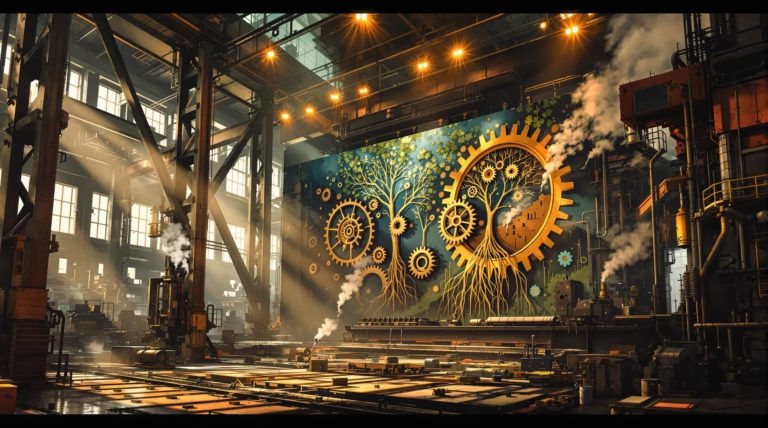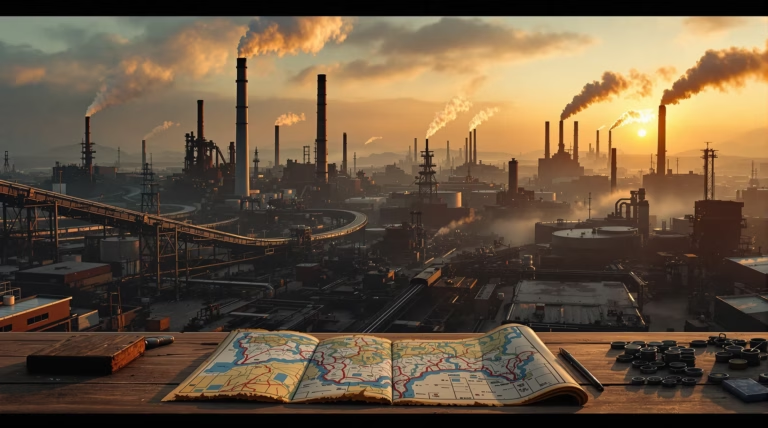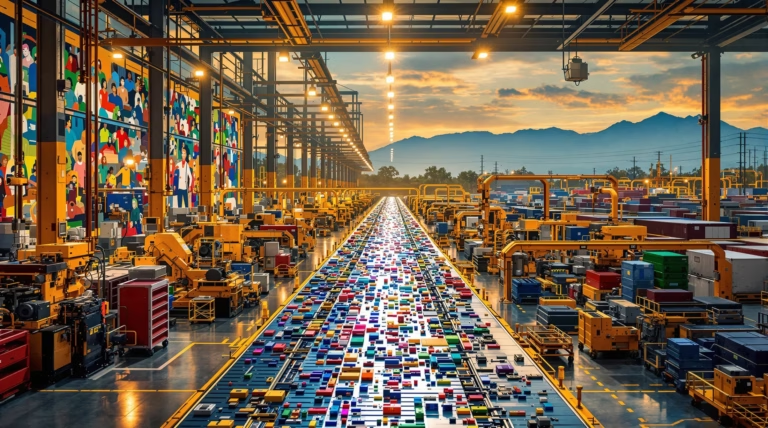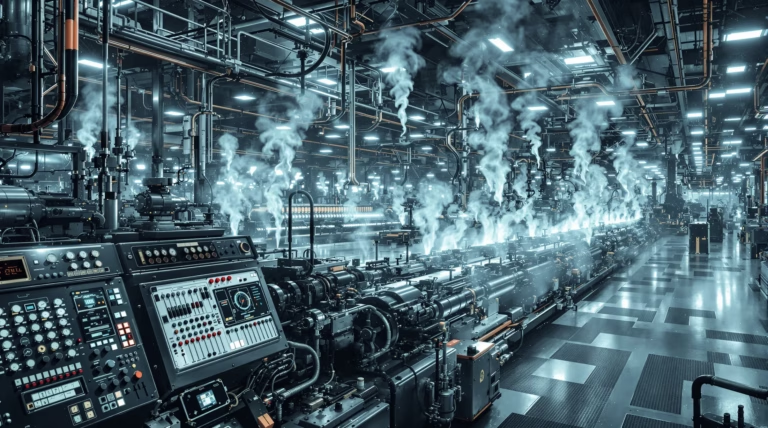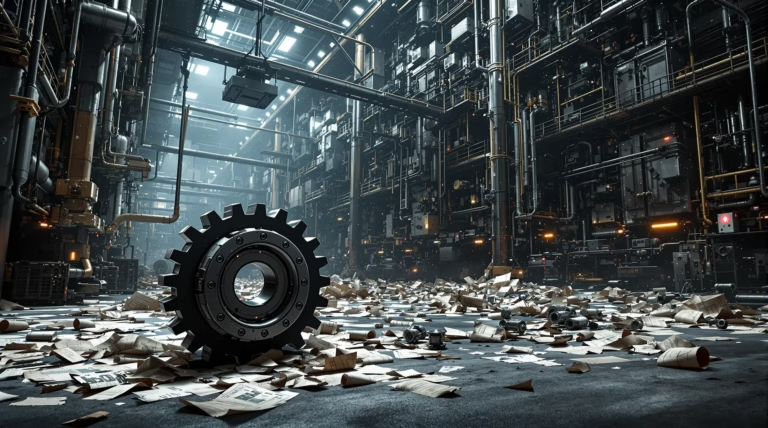Manufacturing vs Fabrication: Key Differences Explained
In today’s industrial landscape, understanding the distinction between manufacturing and fabrication is crucial for businesses and professionals alike. Let’s explore these two fundamental production approaches and their unique characteristics that shape modern industry.
Understanding Manufacturing and Fabrication
Manufacturing and fabrication represent two distinct approaches in the production industry. Manufacturing encompasses the complete transformation of raw materials into finished products through systematic operations. Fabrication, however, functions as a specialized subset, focusing on constructing individual components through specific techniques.
- Manufacturing – comprehensive process including design, production, and assembly
- Fabrication – specialized construction of components through specific techniques
- Relationship – fabrication often serves as a component of larger manufacturing operations
- Purpose – manufacturing creates complete products, while fabrication produces parts or components
Definition of Manufacturing
Manufacturing represents a systematic transformation of raw materials into finished products on a commercial scale. This comprehensive process involves multiple integrated stages and typically requires significant infrastructure investment.
- Research and design implementation
- Material sourcing and procurement
- Production planning and execution
- Quality control measures
- Distribution systems
- Advanced technology integration (robotics, CAD, ERP)
- Mass production capabilities
Definition of Fabrication
Fabrication focuses on constructing products or components through specific material manipulation techniques. This process emphasizes craftsmanship and specialized skills in creating custom or standardized components.
| Common Techniques | Materials Used | Applications |
|---|---|---|
| Cutting | Metals | Structural frameworks |
| Welding | Plastics | Machine parts |
| Machining | Composites | Architectural elements |
| Stamping | Wood | Custom components |
Key Differences Between Manufacturing and Fabrication
While both processes contribute to product creation, they serve different purposes and operate at different scales. Manufacturing orchestrates comprehensive production processes, while fabrication focuses on specialized component creation.
Scale of Production
The scale of operations markedly differs between manufacturing and fabrication processes. Manufacturing excels in mass production environments, while fabrication typically handles smaller batch production or custom projects.
- Manufacturing – high-volume production, continuous operations, standardized processes
- Fabrication – small batch production, custom projects, flexible operations
- Output capacity – thousands to millions vs. dozens to hundreds
- Market focus – mass markets vs. specialized requirements
- Production efficiency – economies of scale vs. customization flexibility
Processes Involved
Manufacturing and fabrication employ distinct methodologies in their core operations. Manufacturing encompasses a comprehensive sequence of coordinated processes, including:
- Material procurement and processing
- Assembly line operations
- Quality testing procedures
- Packaging systems
- Distribution networks
- Automated robotics integration
- Computer-integrated manufacturing systems
Fabrication, conversely, specializes in material manipulation through specific techniques:
| Technique | Methods |
|---|---|
| Cutting | Laser, plasma, water jet |
| Forming | Bending, rolling, stamping |
| Joining | Welding, riveting, adhesives |
| Machining | Turning, milling, grinding |
End Products and Applications
Manufacturing delivers complete, consumer-ready products requiring no additional assembly. These include:
- Household appliances and electronics
- Vehicles and transportation equipment
- Packaged consumer goods
- Pharmaceuticals
- Furniture and fixtures
Fabrication output typically consists of intermediate components and structural elements, such as:
- Steel frameworks for construction
- Custom machine components
- Architectural metalwork
- Industrial containers
- Specialized assembly parts
Applications in Various Industries
Manufacturing and fabrication serve distinct yet complementary roles across industrial sectors. While manufacturing excels in large-scale production of finished goods, fabrication specializes in creating custom components and structures. Modern industrial facilities often integrate both approaches, combining mass production capabilities with specialized fabrication techniques to meet diverse production requirements.
Manufacturing in Automotive and Electronics
The automotive sector exemplifies advanced manufacturing through:
- Sophisticated assembly lines
- Robotic production systems
- AI-driven quality control
- Just-in-time inventory management
- Standardized component production
Similarly, electronics manufacturing demonstrates precision through automated production lines and specialized component fabrication. Industry leaders like Apple and Samsung have refined these processes to create complex devices efficiently and consistently.
Fabrication in Construction and Art
Construction fabrication focuses on creating custom structural components that meet specific architectural requirements. Metal fabrication shops produce:
- Custom steel beams and trusses
- Structural frameworks
- Infrastructure components
- Architectural elements
- Safety-certified structures
In the artistic realm, fabrication enables creative expression through various materials and techniques, demonstrating versatility in both industrial and creative applications. Artists utilize these processes to transform raw materials into expressive forms, highlighting fabrication’s capacity for individualized production.
Choosing Between Manufacturing and Fabrication
Manufacturing represents a comprehensive approach to creating finished products, encompassing the entire production cycle from raw material processing to final assembly. This method excels in producing large quantities of identical items through standardized processes. Fabrication, functioning as a specialized subset of manufacturing, focuses on constructing individual components or structures through specific material manipulation techniques like cutting, bending, and welding.
The choice between these approaches depends on several factors:
- Production volume requirements
- Customization needs
- Available resources and infrastructure
- Cost considerations
- Timeline constraints
Factors to Consider
| Factor | Manufacturing | Fabrication |
|---|---|---|
| Production Volume | Cost-effective for high volumes | Ideal for limited runs |
| Initial Investment | High setup costs | Lower initial capital |
| Customization | Limited flexibility | High adaptability |
| Production Speed | Faster per-unit production | Longer production timelines |
Cost Implications
The financial aspects of manufacturing and fabrication present distinct considerations:
- Manufacturing setup costs can range from thousands to millions of dollars
- Economies of scale significantly reduce per-unit costs in manufacturing
- Fabrication offers lower initial investment but higher per-unit costs
- Custom fabrication pricing depends on materials, labor, and complexity
- Breakeven analysis helps determine the most cost-effective approach based on production volume
For optimal results, many successful projects incorporate both methodologies, utilizing fabrication for specialized components that integrate into broader manufacturing processes. This hybrid approach allows businesses to leverage the advantages of both methods while minimizing their respective limitations.



